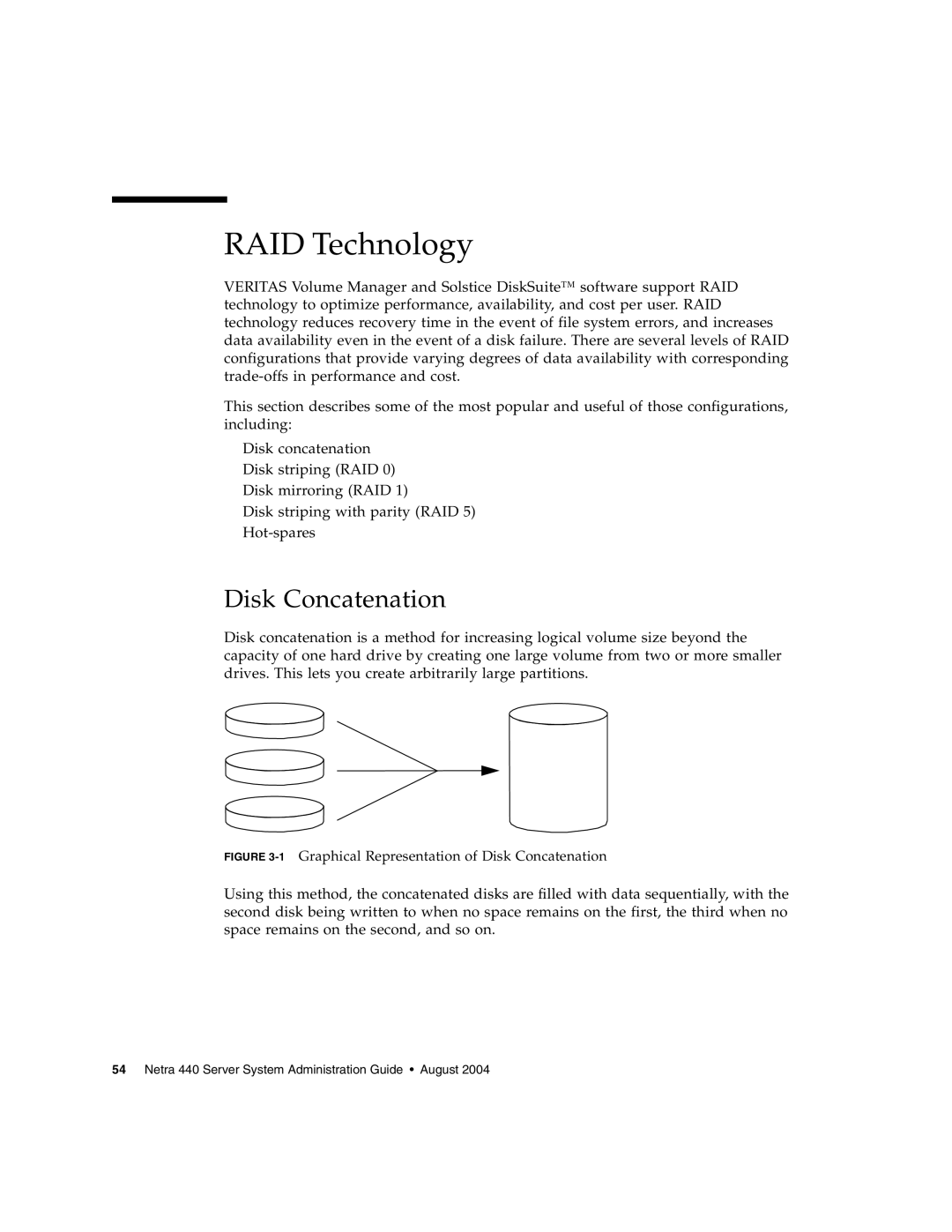
RAID Technology
VERITAS Volume Manager and Solstice DiskSuite™ software support RAID technology to optimize performance, availability, and cost per user. RAID technology reduces recovery time in the event of file system errors, and increases data availability even in the event of a disk failure. There are several levels of RAID configurations that provide varying degrees of data availability with corresponding
This section describes some of the most popular and useful of those configurations, including:
■Disk concatenation
■Disk striping (RAID 0)
■Disk mirroring (RAID 1)
■Disk striping with parity (RAID 5)
■
Disk Concatenation
Disk concatenation is a method for increasing logical volume size beyond the capacity of one hard drive by creating one large volume from two or more smaller drives. This lets you create arbitrarily large partitions.
FIGURE 3-1 Graphical Representation of Disk Concatenation
Using this method, the concatenated disks are filled with data sequentially, with the second disk being written to when no space remains on the first, the third when no space remains on the second, and so on.
